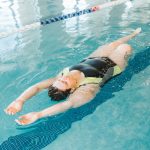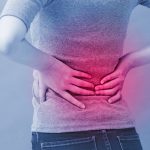When Americans see a doctor, their problem is most often a cold. But running a close second is acute low-back pain, for which the national medical bill is $24 billion annually. A large part of this bill is for surgery, such as fusion of the lower (lumbar) spine. The rate of surgery for low-back pain is twice as high in this country as in other industrialized nations.
According to Dr. Richard Deyo of the University of Washington, who heads a five-year study of back-pain treatment, “these statistics are sobering” because lumbar spinal surgery is frequently unsuccessful. Surgical rates vary widely within this country. For example, they vary sevenfold among the largest counties of the state of Washington. Such discrepancies often indicate that something is amiss.
Contributing to the rush to surgery has been the widespread use of magnetic resonance imaging (MRI), a relatively new diagnostic technique that uses magnetic fields and radio waves. An MRI reveals spinal architecture accurately and in much more detail than an X-ray. But what may look like a trouble spot often is not. Abnormal-looking disks in the lumbar spine are almost as likely to show up in people with no back pain as in those with pain. That is, abnormalities that show up in MRIs are not necessarily related to back pain. And some people with severe back pain have normal-looking MRIs.
In a recent study published in the New England Journal of Medicine, 98 people with no back pain were scanned. Almost two-thirds of them proved to have some spinal abnormality, such as protruded, herniated, or degenerated disks. Such abnormalities, the study concluded, may simply be coincidental-meaning that they don't cause the pain. In an editorial accompanying the study, Dr. Deyo urged doctors not to rush to use MRIs to diagnose patients with sciatica or uncomplicated acute low-back pain (that is, pain not due to underlying illness or injury and not involving nerve damage or paralysis). The best plan is to try more conservative treatments first.
In another study that appeared in Annals of Internal Medicine, “practice styles” of doctors treating back pain in a large HMO were compared. Doctors who routinely prescribed bed rest and prescription drugs were significantly less successful with their patients than those who taught patients how to deal with their own back problems through exercise and life-style changes and who prescribed drugs less frequently. Particularly, use of narcotic type pain killers and smoking is associated with a delayed recovery from back pain. In addition, patients seemed to benefit from being told that back pain is amenable to self-care, that it usually goes away in a reasonable time, and that even though it becomes chronic in some cases, it's manageable. Patients who were taught self-care did better and were also better satisfied.
Dr. Deyo recommends the following for acute low-back pain:
- Brief bed rest. More than a day or two in bed is usually counterproductive.
- Nonprescription painkillers such as aspirin or ibuprofen. If your doctor prescribes them, muscle relaxants can be used for a defined period (usually one week).
- Begin walking as soon as possible.
- If you are overweight, try to lose weight by cutting calories from your diet and exercising more.
- Some studies have shown short-term benefits of chiropractic care for acute low-back pain. If you decide to consult a chiropractor, ask your doctor for a referral.
- Don't consent to traction, which has not been shown to be beneficial for low-back pain.
- If your doctor suggests surgery, get a second opinion.
- Don't Smoke! Smoking seems to aggravate back pain.
Rarely, persistent or severe back pain can be a sign of some underlying illness (such as cancer, infections, or joint disease), and if your condition worsens, you may need further diagnosis or even an MRI. But, within 12 weeks, according to Dr. Deyo, nearly 95% of back pain patients have returned to work. A bit of reassurance about the likelihood of rapid recovery can go a long way toward helping back pain patients recuperate.
Modified from an article in the “University of California at Berkeley Wellness Letter”, December, 1994.









